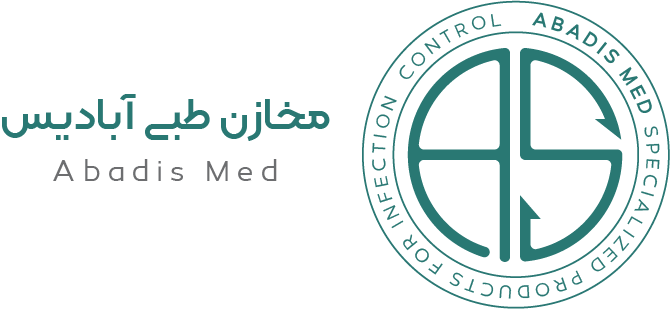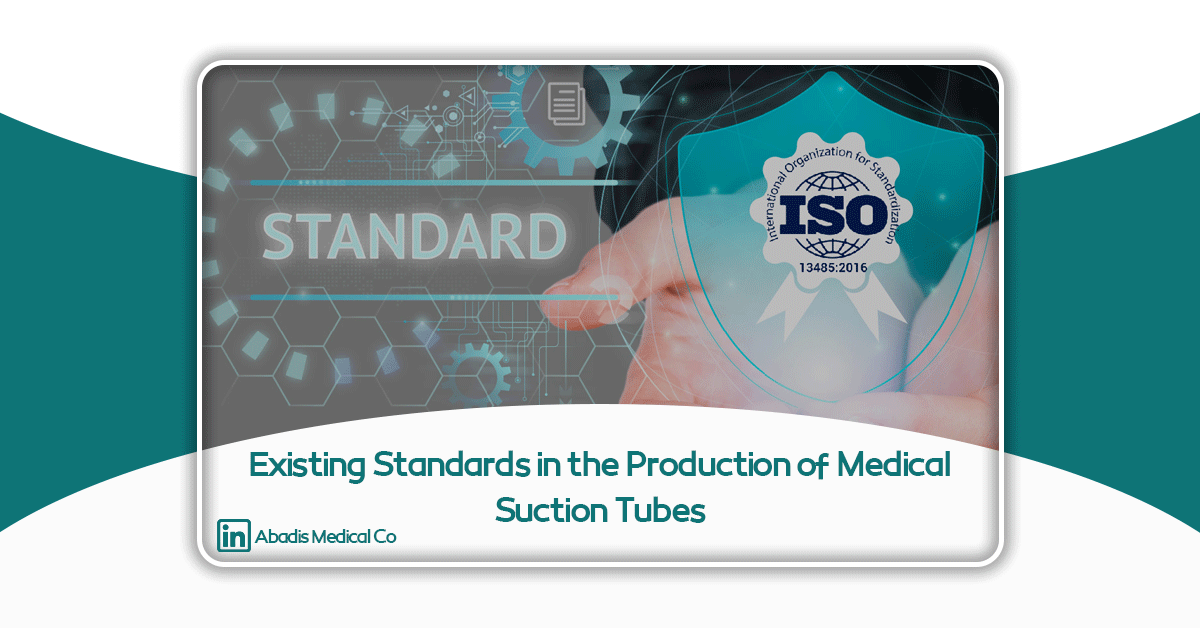Introduction
The medical device industry is one of the most critical sectors worldwide, as even the slightest error in design or production can lead to irreversible consequences for patient health. Among the widely used tools in this industry, the suction tube holds a special place.
This seemingly simple yet highly practical device plays a crucial role in evacuating secretions, blood, and bodily fluids during surgery, intensive care, and emergency departments. Using a standardized suction tube can directly enhance surgical efficiency and patient safety while preventing complications such as airway obstruction and contamination of the surgical environment.
Suction tubes are usually made from medical-grade plastics and packaged sterile. Due to direct contact with patients’ bodies and vital fluids, the quality and safety of this device are paramount. Manufacturers must adhere to a set of international and national standards throughout all stages—from design and material selection to sterilization and packaging.
This article reviews the most important standards for producing medical suction tubes and explains why compliance is essential for manufacturers and healthcare providers.
The Importance of Compliance with Standards in Suction Tube Production
1. Ensuring Patient Safety:
Using standardized suction tubes reduces the risk of infections and cross-contamination. Non-standard tubes can cause allergic reactions, cross-infections, or even transmit pathogens.
2. Enhancing Product Quality:
Standards ensure that tubes are resistant to tearing, kinking, and obstruction. Flexibility and durability are guaranteed under various clinical conditions, directly supporting medical team performance.
3. Compliance with Global Regulations:
Producing according to international standards such as ISO and CE facilitates export and access to foreign markets, boosting company revenue and establishing brand credibility worldwide.
4. Building Trust with Healthcare Professionals:
Hospitals and physicians prefer standardized medical equipment. Compliance increases trust in your brand, encouraging repeat and long-term purchases.
5. Reducing Legal and Financial Risks:
Non-compliance can result in heavy fines, product recalls, or legal action. Adhering to standards ensures compliance with national and international laws.
Overall, following standards allows suction tubes to meet domestic demand and succeed in international markets.
International Standards for Suction Tube Production
Producing medical suction tubes requires compliance with international standards that ensure quality, safety, and performance. The key standards include:
1. ISO 13485 – Quality Management System
ISO 13485 is one of the most widely used standards in medical devices and focuses on quality management. It emphasizes that all production processes, from design to delivery, must be documented, traceable, and under strict quality control.
Key points:
•Design and production must be documented and traceable.
•Quality control applied at all stages, from raw materials to packaging.
•Raw materials must meet safety and biocompatibility requirements.
•Detailed documentation of production processes and quality tests ensures quick traceability and correction of issues.
2. ISO 10993 – Biological Evaluation
Since suction tubes come into direct contact with the patient’s body and fluids, they must be made of materials that do not cause allergic reactions, toxicity, or carcinogenic effects.
Key points:
•Cytotoxicity: The product should not cause cell death.
•Skin and tissue irritation: Contact with patient tissue must be safe.
•Systemic toxicity testing: Tubes must not harm internal organs or body systems.

3. ISO 14971 – Risk Management
Manufacturers must identify and manage potential risks associated with suction tube use, minimizing medical and operational hazards.
Common risks addressed:
•Tube rupture or blockage disrupting fluid flow.
•Cross-contamination increasing infection risk.
•Tissue damage due to improper use or substandard materials.
4. ISO 11135 & ISO 11137 – Sterilization Processes
Suction tubes are typically supplied sterile.
•ISO 11135: Sterilization using ethylene oxide.
•ISO 11137: Sterilization using gamma radiation.
These standards ensure that products are ready for use in operating rooms without additional sterilization.
5. CE Marking (European Union)
Suction tubes sold in Europe must carry the CE mark, confirming compliance with EU safety, performance, and biocompatibility requirements.
•CE marking increases trust among European healthcare providers.
•Without it, legal sales in the EU market are not possible.
6. FDA (U.S. Food and Drug Administration)
For export to the U.S., manufacturers must comply with FDA 21 CFR Part 820, which covers:
•Product quality control
•Documentation of production processes
•Medical device traceability
Compliance ensures that suction tubes are legal and recognized in the U.S. market.
Expected Quality Features of Standard Suction Tubes
To ensure optimal performance, a medical suction tube must meet technical and quality criteria beyond international standards:
1. High-Quality Raw Materials:
•Typically made from medical-grade PVC or silicone.
•Materials must be non-toxic, flexible, and tear-resistant.
2. Appropriate Flexibility:
•Allows easy navigation in complex body pathways.
•Prevents tissue damage or fluid flow obstruction.
3. Transparency:
•Tubes are often transparent or semi-transparent for fluid monitoring.
•Enables precise control and rapid response in emergencies.
4. Resistance to Kinking and Tearing:
•Tubes must withstand bending in complex surgical or ICU conditions.
5. Variety of Sizes:
•Produced in sizes 25 to 35 to suit surgery type, patient age/weight, and location.
6. Compatibility with Accessories:
•Must fit suction connectors, filters, and other hospital equipment.
7. Packaging and Sterilization:
•Packaging prevents contamination and maintains sterilization.
•Typically sterilized with ethylene oxide or gamma radiation.
National Standards in Iran
In Iran, medical device production, including suction tubes, is regulated by the Institute of Standards & Industrial Research of Iran (ISIRI) and the Ministry of Health and Medical Education. Compliance ensures patient safety, allows domestic marketing, and prepares products for export.
Key requirements:
1.Production license from IMED: Official authorization for producing disposable medical devices.
2.Compliance with international standards: Iranian manufacturers must follow ISO 13485, ISO 10993, and CE.
3.Strict quality control: All stages, from raw materials to packaging, undergo rigorous testing.
4.Verification of sterilization and biocompatibility: Products must be safe for human use.
Challenges in Iran
- Access to high-quality medical-grade materials.
- High costs of obtaining international certifications.
- Need for modern sterilization and packaging equipment.
- Competition with foreign brands holding CE and FDA approvals.
Abadis’ Role in Producing Standard Suction Tubes
Abadis Med Co is a leading Iranian manufacturer of disposable medical devices. By fully adhering to global standards such as ISO 13485 and ISO 10993, Abadis provides products suitable for both domestic and export markets.
Features of Abadis suction tubes:
•Made from medical-grade PVC
•Sterilized with ethylene oxide
•Transparent and durable design
•Produced in various sizes
•IMED-approved
Conclusion
Compliance with global standards in suction tube production is non-negotiable. These standards ensure patient safety and enhance brand credibility in domestic and international markets.
Abadis Med Co, through modern technology and full compliance with ISO standards and Ministry of Health regulations, has secured a prominent position in disposable medical devices. Using Abadis standard suction tubes is a reliable way to reduce infection risks and improve healthcare quality.
References
1.ISO 13485:2016 – Medical devices — Quality management systems
https://www.iso.org/standard/59752.html
2.ISO 10993 – Biological evaluation of medical devices
https://www.iso.org/standard/68936.html
3.ISO 14971:2019 – Medical devices — Application of risk management
https://www.iso.org/standard/72704.html
4.ISO 11135 & ISO 11137 – Sterilization of medical devices
https://www.iso.org/
5.CE Marking for Medical Devices – European Commission
https://health.ec.europa.eu/medical-devices
6.FDA – U.S. Food & Drug Administration
https://www.fda.gov/medical-devices
7.Institute of Standards & Industrial Research of Iran – Medical Devices
https://www.isiri.gov.ir/
8.Iran Medical Equipment Directorate (IMED)
http://www.imed.ir/







































